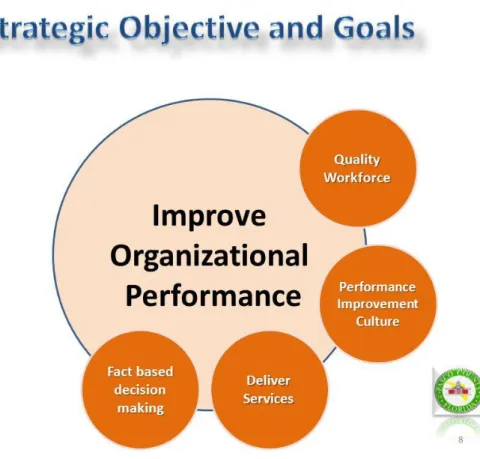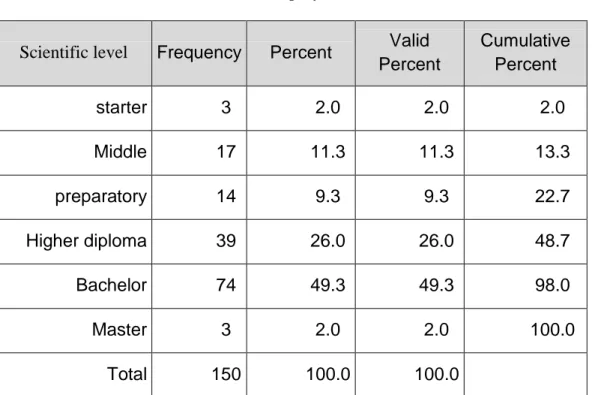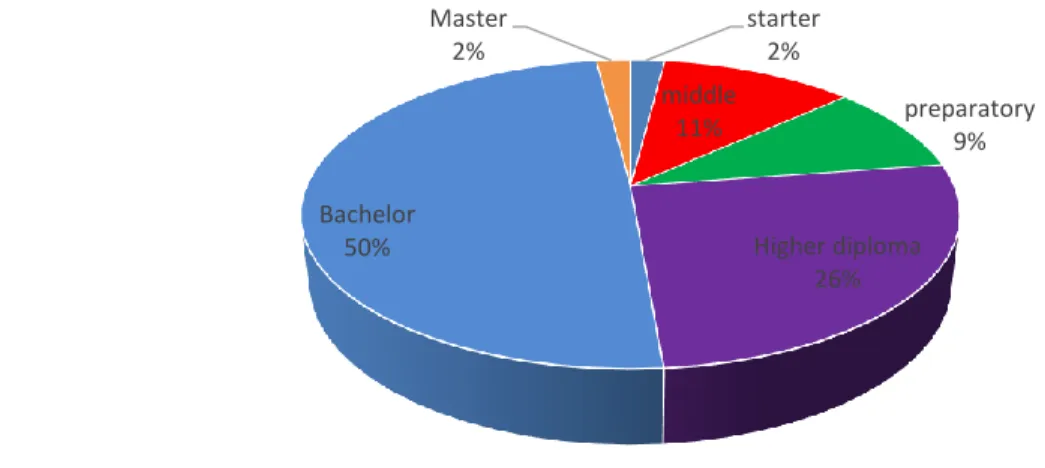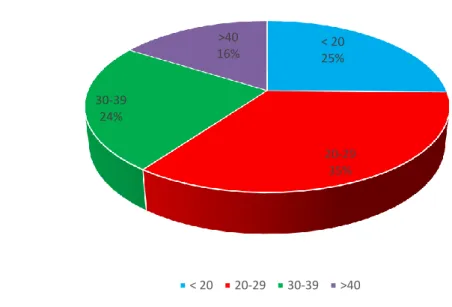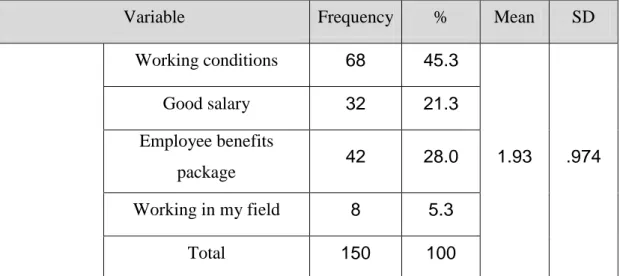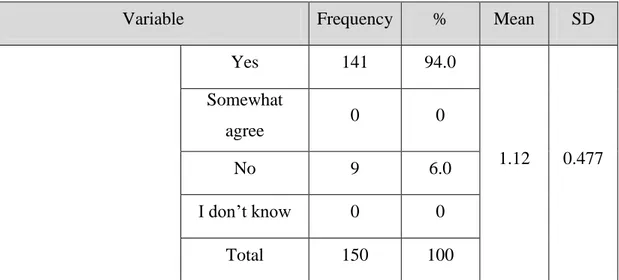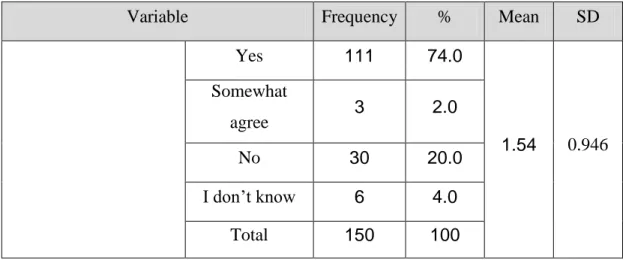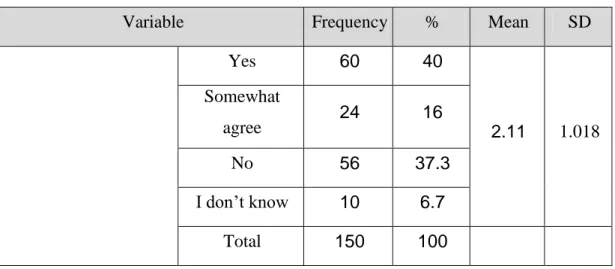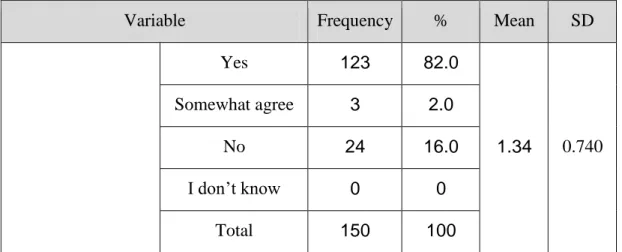T.C
BINGOL UNIVERSITY
SOCIAL SCIENCE INSTITUTE
BUSINESS ADMINISTRATION DEPARTMENT
THE NEED OF EMPLOYEE EMPOWERMENT TO
IMPROVE THE CUSTOMER SERVICES.
A CASE STUDY OF (MIC) IN THE NORTH OF IRAQ.
PREPARED BY
HAYMAN FEQEMOHAMMAD MOHAMMED
MASTER THESIS
SUPERVISOR
ASSIST. PROF. DR. MEHMET GÜVEN
T.C
BİNGÖL ÜNİVERSİTESİ
SOSYAL BİLİMLER ENSTİTÜSÜ
İŞLETME ANA BILIM DALI
MÜŞTERI HIZMETLERI GELIŞTIRMEDE PERSONEL
GÜÇLENDIRME İHTIYACI. KUZEY IRAK
BÖLGESINDE (MIC) ÖRNEK BIR OLAY.
HAZIRLAYAN
HAYMAN FEQEMOHAMMAD MOHAMMED
YÜKSEK LİSANS TEZİ
DANIŞMAN
YRD. DOÇ. DR. MEHMET GÜVEN
i
LIST OF CONTENTS
LIST OF CONTENTS ... I SCIENTIFIC ETHICAL NOTICE (BİLİMSEL ETİK BİLDİRİMİ) ... V THESIS ACCEPTANCE AND APPROVAL ... VII ACKNOWLEDGMENTS ... VIII ÖNSÖZ... IX DEDICATION ... X ÖZET ... XI ABSTRACT ... XII LIST OF ACRONYMS... XIII LIST OF TABLES ... XIV LIST OF FIGURES ... XVI LIST OF APPENDICES... XVII
THE INTRODUCTORY ... 1
1. INTRODUCTION ... 1
2. PREVIOUS STUDIES ON EMPLOYEE EMPOWERMENT ... 2
CHAPTER ONE EMPLOYEE EMPOWERMENT 1. ON THE NEED FOR EMPLOYEE EMPOWERMENT TO IMPROVE THE (CS) ... 6
1.1 EMPLOYEEEMPOWERMENT ... 6
1.1.1 Concept Defining of Empowerment ... 7
1.1.2 Organizational Development Goals ... 9
1.2 THEIMPACTOFTRAININGONORGANIZATIONALINNOVATION...12
1.3 ORGANIZATIONALPERFORMANCE ...13
1.4 EFFECTSOFTRAININGANDDEVELOPMENTONORGANIZATIONAL PERFORMANCE ...14
1.5 THEDIFFERENCEBETWEENORGANIZATIONALDEVELOPMENTAND ADMINISTRATIVEDEVELOPMENT...16
1.6 PROPERTIESOFEMPOWERMENT ...17
1.6.1 Adopted a New Culture ... 17
1.6.2 Empowerment Focuses on More Problems Solutions ... 18
ii
1.6.4 The Concept of Democratic Empowerment ... 18
5.6.1 The Concept of Empowerment Motivational ... 18
1.6.6 The Empowerment Mainly On the Formation of Effective Teams ... 19
CHAPTER TWO MANAGEMENT DEVELOPMENT 2. DEVELOPMENT AND TRAINING OF HR ... 20
2.1 IMPORTANCETOTHEFOUNDATION ...20
2.2 IMPORTANTFORWORKINGINDIVIDUALS ...21
2.3 IMPORTANCEFORTHEDEVELOPMENTOFHUMANRELATIONS ...21
2.4 METHODSOFEMPOWERMENT ...22
2.4.1 Leadership Style ... 22
2.4.2 Method of Empowering Individuals ... 22
2.4.3 Method of Empowering Team... 23
2.4.4 Total Quality Management (TQM) and Empowerment Stage ... 23
2.5 DEVELOPINGFACILITATIONSKILLS ...24
2.5.1 Why Do We Need Facilitation Skills? ... 25
2.5.2 How Do You Plan to Facilitate The Process of Good? ... 25
2.6 STRATEGIC MANAGEMENT OF ORGANIZATIONS ...25
2.6.1 Strategic Thinking ... 26
2.6.2 Strategic Management Concept ... 26
CHAPTER THREE METHOD, DATA ANALYSES 3. METHOD, DATA ANALYSES ... 28
3.1 RESEARCHMETHODOLOGY ...28
3.1.1 Company Background ... 28
3.1.2 Thesis Statement ... 28
3.1.3 Significance of the Study... 29
3.1.4 The Objective of This Study... 29
3.1.5 Research Hypothesis ... 31
3.1.6 Variables and their Interdependence ... 31
3.1.7 Research Problem ... 31
3.1.8 Structure of the Study ... 32
3.1.9 Methodology the Study ... 33
3.1.10 Study Area ... 33
iii
3.1.12 Data-Collection Methods... 35
3.1.13 Community Case Study Sample ... 35
3.1.14 Description of the Research Sample ... 36
3.1.15 Data Analysis ... 36
3.2 MEASUREMENT ...36
3.2.1 Conceptualization of Independent Variable ... 36
3.2.2 Conceptualization of Dependent Variable ... 36
FINDINGS, ANALYSIS, AND DISCUSSION ... 37
3.3 SOCIODEMOGRAPHICCHARACTERISTICSOFRESPONDENTS ...37
3.3.1 Gender of Respondents ... 37
3.3.2 Marital Status of Respondents ... 37
3.3.3 Education level of respondents ... 38
3.3.4 Age of Respondents ... 39
3.3.5 Duration of Work in Company ... 40
3.4 FACTORSAFFECTINGJOBSATISFACTIONANDMOTIVATION ...41
3.4.1 Reasons to choose the Iraqi Modern Company ... 41
3.4.2 Training Staff Is an Indication for Developed HR ... 41
3.4.3 Workshops Benefits ... 42
3.4.4 Satisfied With the Company's Privileges ... 42
3.4.5 Self-Satisfaction and Affects the Development of CS ... 43
3.4.6 Employee-Satisfaction and Affects on Development of CS... 44
3.4.7 Relations between the Organization and the Employee to Make a Decision .... 44
3.4.8 The Relationship between Employee Encouragement by the Manager and the Impact on CS ... 45
3.4.9 Organizations Enters the Employee on the Training Program, Will the Employee Be Ready To Reach Your Goals ... 45
3.5 FACTORSAFFECTINGEMPLOYEESATISFACTION ...46
3.5.1 The Training Program, To Be Able to Speed up The Results of the Crop and Affect the Quality ... 46
3.5.2 Provide Security Job to Improve the CS ... 47
3.5.3 Joint Action to Improve the Level of Staff and Customer Service Effects ... 48
3.5.4 The Effects of Staff Efficiency in Reaching the Highest Levels of the Development of Customer Service ... 48
3.5.5 The Effects of Open Courses in Coordination with Educational Institutions ... 49
3.5.6 Cooperation between the staff in doing business ... 49
iv
3.5.8 Appropriate ways instead of company decisions to develop customer service . 51
3.5.9 Communication services to improve CS ... 52
3.6 FACTORSAFFECTINGCUSTOMERSATISFACTION ...52
3.6.1 Participated In Training Courses and Workshops ... 52
3.6.2 The Effects of Punishment and Reward for Staff ... 53
3.6.3 Identify Training Objectives... 54
3.6.4 Monitoring Employee Performance ... 54
3.6.5 Training Courses Will Reduce the Will to Work ... 55
3.6.6 The nature of your business to participate training courses ... 55
3.6.7 The Company's Policy With Regard To the Training of Staff and Teachers .... 56
3.6.8 Training Programs Enable Employee to Feel Responsible ... 57
3.7 CORRELATION BETWEEN VARIABLES ...58
3.8 REGRESSION ANALYSIS OF EMPLOYEE-SATISFACTION AND AFFECTS THE DEVELOPMENT OF CS. ...66
3.9 QUALITATIVEDATAOUTCOMES...69
CONCLUSION AND RECOMMENDATIONS ... 71
CONCLUSIONS ... 71
RECOMMENDATION ... 75
FURTHER RESEARCH ... 76
REFERENCE ... 77
APPENDIXA:QUESTIONNAIRE ...81
APPENDIXB:INTERVIEWQUESTIONS ...86
v
SCIENTIFIC ETHICAL NOTICE (BİLİMSEL ETİK BİLDİRİMİ)
I have met with the scientific ethics and academic principles carefully until the conclusion of the proposal of the graduate work [The need of employeeempowerment to improve the customer services. A Case Study of (MIC) In the
Kurdistan Region (KRG) of Iraq] I declare that the works I have used as a source of each and every quotation I have made directly or indirectly in this work which I have prepared in accordance with the rules of thesis writing in the context of scientific ethics and tradition.
/ 01
/ 2018
Signature
vi
SCIENTIFIC ETHICAL NOTICE (BİLİMSEL ETİK BİLDİRİMİ)
I hereby declare that all information in the thesis has been obtained and presented in accordance with academic rules and ethical conduct. I also declare that, as required by these rules and conduct. I have fully cited and referenced all material and results that are not original to this work./ 01
/ 2018
Signature
vii
THESIS ACCEPTANCE AND APPROVAL
BINGOL UNIVERSITY
SOCIAL SCIENCES INSTITUTE DIRECTORATE
This thesis entitled [The need of employee empowerment to improve the
customer services. A Case Study of (MIC) In the North of Iraq], prepared by Hayman
Feqemohammad Mohammed, was found to be successful as a result of the thesis defense examination held on the date of [ 19 / 01 / 2018 ] and accepted by our juror as the Master Degree in the department of Business Administration.
THESIS JURY MEMBERS:
President: Assoc. Prof. Dr. Said PATIR. Signature……….. Supervisor: Yrd. Doç. Dr. Mehmet GÜVEN. Signature……….. Member: Yrd. Doç. Dr. Abdullah OĞRAK Signature………..
CONFIRMATION
ONAY
This thesis has been accepted by the jury determined in the [19 / 01 / 2018] Session of the Board of Directors of the Institute of Social Sciences of Bingöl University.
Director of the Institute
viii
ACKNOWLEDGMENTS
First of all I would like to thank GOD for giving me tremendous strength and courage to complete my master thesis, I would also like to express my gratitude to (Asst. Prof. Dr. Mehmet GÜVEN) my supervisor who was always enthusiastic and motivated me to complete my letter without his help this work would not have been done. I would like to express my warm and sincere gratitude towards him who encouraged and guided me throughout my research study.
Special thanks to Assoc. Prof. Dr. Abdulvahap BAYDAŞ, and Assoc. Prof.
Dr. Said PATIR for sharing their time with me and there always support my thesis
ix
ÖNSÖZ
Öncelikle bu tezimi bitirme kabiliyeti veren Allah’a binlerce şükranlarımı sunuyorum. Tez çalışmam boyunca desteklerini esirgemeyen tez danışmanım Yrd.
Doç. Dr. Mehmet GÜVEN’in her zaman bana karşı hevesli yardımı olmadan
bitiremezdim. Tezimi tamamlamada beni daima motive eden denetçime minnettarlığımı ifade etmek isterim.
Ayrıca, kıymetli zamanlarını benimle paylaşan ve tez çalışmamı destekleyen
Doç. Dr. Abdulvahap BAYDAŞ ve Doç. Dr. Said PATIR’a da özel teşekkürlerimi
x
DEDICATION
I dedicate my dissertation work to my family especially my Parents who support me in every field in life and my incredible gratefulness go to my wife Rayan Bahram, for her support, who take all of responsible instead me, and my beloved kids: Abdulmatin, Taman, and Abdulrahman whom I can't force myself to stop loving. In addition, everyone they helped me by words.
I will always appreciate all they have done, especially Sarhang Razzaq for helping me develop my technology skills, Snoor Faqe for the many hours of proofreading.
xi
ÖZET
Tezin Başlığı: Müşteri Hizmetleri Geliştirmede Personel Güçlendirme İhtiyacı.
Kuzey Irak Bölgesinde (MIC) Örnek Bir Olay.
Tezin Yazarı: Hayman Feqemohammad MOHAMMED Danışman: Yrd. Doç. Dr. Mehmet GÜVEN
Anabilim Dalı: İşletme Bilim Dalı:
Kabul Tarihi: …../01/2018
Modern yönetim, yönetimsel çalışma sistemi ile başa çıkmak için daha kapsamlı kavramlar bünyesine dâhil etti ve bu modern kavramlar bir süre önce kurumlarda ve organizasyonlarda kapsamlı kaliteyi teşvik etme çabalarını yaygınlaştırmak maksadıyla başladı.
Kavram, güç kelimesinden türetilmiştir. Çoğu tanım, çalışanların yetkilendirilmesinin işlevsel özellikleriyle beraber yönetim ve iş ile alakalı mevzularda bir saygı göstergesi olduğuna katılır. Öyle ki bu vasıtayla çalışanlar kendi kararlarını ve uygulamalarının sorumluluğunu alma salahiyetine sahip olurlar.
Bu çalışmada, çalışanların Irak Cumhuriyeti Kürdistan’ınına bağlı Erbil şehrindeki ticari şirketlerden birinde müşteri hizmetlerini geliştirmelerine olanak sağlama etkisinin tespit edilmesi amaçlanmıştır. Çalışmanın amaçlarını gerçekleştirmek için bir anket tasarlanmış, geliştirilmiş ve bir örneğe dönüştürülmüştür. Anket verilerinin değerlendirilmesinde sosyal bilimler için istatistik programı (SPSS) kullanılmıştır.
Bu araştırma bilimsel kaynaklara dayanarak müşteri hizmetlerini geliştirmek için çalışanları yetkilendirme ihtiyacını tasvir etmektedir. Verilerin düzenlenmesinden sonra korelasyon, gerileme ve daha fazla istatistiksel model uygulamaya başladım. Verilerle eşleşen iki ihtimal var; Bağımsız değişken (çalışanların güçlendirilmesi yolları) iyi yapılırsa, bağımlı değişken üzerinde (müşteri hizmetleri) belirgin bir etkisi olur veya tam tersi geçerlidir. Sonraki bölümlerde daha detaylı bilgi sunulmuştur.
ANAHTAR KELİMELER: Personel Güçlendirme, Müşteri Hizmetleri, Eğitim ve Geliştirme, İnsan Kaynakları.
xii
ABSTRACT
Title of thesis: The Need of Employee Empowerment to Improve the Customer
Services. A Case Study of (Mic) in the North of Iraq.
Author: Hayman Feqemohammad Mohammed. Supervisor: Yrd. Doç. Dr. Mehmet GÜVEN. Department: Business Administration Sub-field:
Date: / 01 / 2018
Modern management introduced within advanced concepts to deal with the administrative work system and these modern concepts began some time ago, as it began to spread efforts to promote quality comprehensive in institutions and organizations.
This force takes several forms of specialization according to which they are applied to, and in the science of management, there is a group of elements that can be considered aspects of force enables the employee to perform his work better, such as the validity, responsibility, knowledge, appearance, technology, relationships, money, personal trait. The study aimed to identify the effect of enabling employees to improve customer service in one of the commercial companies in the Republic of Iraq from the Kurdistan city of Erbil. To achieve the objectives of the study, a questionnaire was designed, developed, and distributed to a sample. The statistical package for social sciences (SPSS) was used to analyze the questionnaire data.
This research illustrates the need of employee empowerment to improve customer services depending on scientific resources. In the theoretical section and depending on the data received from my questionnaire survey in MIC in the empirical section. After organizing the data I started applying correlation and regression and more, statistic model, there are two probabilities that match with the data which is; if the independent variable (ways of employee empowerment) is well done it will have an obvious impact on the dependent variable (customer service) and vice versa, more details will be in next chapters.
Key words: Employee Empowerment, Customer Services (CS), Training and
xiii
LIST OF ACRONYMS
TQM: Total Quality Management. T, D: Training and Development.
CS: Customer Services.
HR: Human Resources.
KRG: Kurdistan Region Government.
IQ: Iraq.
MIC: Modern Iraqi Company.
TR: Turkey.
xiv
LIST OF TABLES
TABLE 1.THE DIFFERENCE BETWEEN ORGANIZATIONAL DEVELOPMENT AND ADMINISTRATIVE
DEVELOPMENT ...16
TABLE 2.A GENERAL DESCRIPTION OF THE WORKERS IN THE MIC. ...35
TABLE 3.GENDER DEFINITION ...37
TABLE 4.EMPLOYEE SCIENTIFIC ...38
TABLE 5.EMPLOYEE AGES ...39
TABLE 6.THE DURATION OF EMPLOYEE WORK IN MIC ...40
TABLE 7.REASONS TO CHOOSE THE IRAQI MODERN COMPANY ...41
TABLE 8.TRAINING STAFF IS AN INDICATION FOR DEVELOPED HR ...41
TABLE 9.WORKSHOPS AFFECTS ...42
TABLE 10.EMPLOYEE SATISFIED WITH THE COMPANY'S PRIVILEGES ...42
TABLE 11.SELF-SATISFACTION AND AFFECTS THE DEVELOPMENT OF CS ...43
TABLE 12.EMPLOYEE-SATISFACTION AND AFFECTS ON DEVELOPMENT OF CS ...44
TABLE 13.RELATIONS BETWEEN THE ORGANIZATION AND THE EMPLOYEE TO MAKE A DECISION ...44
TABLE 14.THE RELATIONSHIP BETWEEN EMPLOYEE ENCOURAGEMENT BY THE MANAGER AND THE IMPACT ON CS ...45
TABLE 15.ORGANIZATIONS ENTERS THE EMPLOYEE ON THE TRAINING PROGRAM, WILL THE EMPLOYEE BE READY TO REACH YOUR GOALS ...45
TABLE 16.THE TRAINING PROGRAM, TO BE ABLE TO SPEED UP THE RESULTS OF THE CROP AND AFFECT THE QUALITY ...46
TABLE 17.PROVIDE SECURITY JOB TO IMPROVE THE CS ...47
TABLE 18.JOINT ACTION TO IMPROVE THE LEVEL OF STAFF AND CUSTOMER SERVICE EFFECTS ...48
TABLE 19.JOINT ACTION TO IMPROVE THE LEVEL OF STAFF AND CUSTOMER SERVICE EFFECTS ...48
TABLE 20.THE EFFECTS OF OPEN COURSES IN COORDINATION WITH EDUCATIONAL INSTITUTIONS ...49
TABLE 21.COOPERATION BETWEEN THE STAFF IN DOING BUSINESS ...49
TABLE 22.TRAINING PURPOSE OF KNOWING OTHERS ABOUT THE COMPANY ...50
TABLE 23.APPROPRIATE WAYS INSTEAD OF COMPANY DECISIONS TO DEVELOP CS. ...51
TABLE 24.COMMUNICATION SERVICES TO IMPROVE CS ...52
TABLE 25.PARTICIPATED IN TRAINING COURSES AND WORKSHOPS ...52
TABLE 26.THE EFFECTS OF PUNISHMENT AND REWARD FOR STAFF ...53
TABLE 27.IDENTIFY TRAINING OBJECTIVES. ...54
TABLE 28.MONITORING EMPLOYEE PERFORMANCE...54
TABLE 29.TRAINING COURSES WILL REDUCE THE WILL TO WORK ...55
TABLE 30.THE NATURE OF YOUR BUSINESS TO PARTICIPATE TRAINING COURSES ...55
TABLE 31.THE COMPANY'S POLICY WITH REGARD TO THE TRAINING OF STAFF AND TEACHERS ...56
TABLE 32.TRAINING PROGRAMS ENABLE EMPLOYEE TO FEEL RESPONSIBLE ...57
xv TABLE 34.CORRELATIONS ...59 TABLE 35.CORRELATIONS ...60 TABLE 36.CORRELATIONS ...61 TABLE 37.CORRELATIONS ...62 TABLE 38.CORRELATIONS ...63 TABLE 39.CORRELATIONS ...64 TABLE 40.CORRELATIONS ...65 TABLE 41.CORRELATIONS ...66 TABLE 42.CORRELATIONS ...66 TABLE 43.ANOVA ...67
TABLE 44.REGRESSION ANALYSIS OF EMPLOYEE-SATISFACTION AND AFFECTS THE DEVELOPMENT OF CS...68
xvi
LIST OF FIGURES
FIGURE 1.EMPLOYEE EMPOWERMENT ... 7
FIGURE 2.THE CONCEPT OF EMPOWERMENT ... 9
FIGURE 3.ORGANIZATIONAL DEVELOPMENT GOALS ...10
FIGURE 4.THE STRATEGIC OBJECTIVE GOALS...13
FIGURE 5.THE LEADERSHIP CONCEPTS ...22
FIGURE 6.THE TQMPRINCIPLES ...24
FIGURE 7.MAP OF ERBIL GOVERNORATE AND ALL DISTRICTS ...34
FIGURE 8.GENDER DEFINITION ...37
FIGURE 9.MARITAL STATUS ...38
FIGURE 10.EMPLOYEE SCIENTIFIC ...39
FIGURE 11.EMPLOYEE AGE ...40
FIGURE 12.SELF-SATISFACTION AND AFFECTS THE DEVELOPMENT OF CS ...43
FIGURE 13.THE TRAINING PROGRAM, TO BE ABLE TO SPEED UP THE RESULTS OF THE CROP AND AFFECT THE QUALITY ...47
FIGURE 14.COOPERATION BETWEEN THE STAFF IN DOING BUSINESS ...50
FIGURE 15.TRAINING PURPOSE OF KNOWING OTHERS ABOUT THE COMPANY...51
FIGURE 16.PARTICIPATED IN TRAINING COURSES AND WORKSHOPS ...53
xvii
LIST OF APPENDICES
Appendix A: Employee Questionnaire………….…………..………….……….………81 Appendix B: Interview questions………...………..………86
1
THE INTRODUCTORY
1. INTRODUCTION
Now days those HR are the most important resources used within modern organizations. HR is the intellectual and main element in production and services. It is the mean and the purpose of production and services. It is also the conscience, heart and sense of the organization. “Employees who believe that management is concerned about them as a whole person – not just an employee – are more productive, more satisfied, more fulfilled. Satisfied employees mean satisfied customers, which leads to profitability.” (Anne M. Mulcahy).
The concept of empowerment of the human resource is one of the modern concepts that came with the huge and rapid changes. In the business environment and agreements, global trade and the emergence of civil society, as well as the development of administrative thought in general where the empowerment is not different from the technical aspect is much more than the linguistic meaning (Anne M. Mulcahy). It does not mean the formal participation of workers in the decision-making industry and does not mean listening in different meetings. But to give a real voice to the workers with their grants and provide them with tools and tools information and help them interact with others and enable them to take appropriate decisions without the need for approval to provide them with the opportunity, to master their work or manage it in such a way that they can provide better service to the clients of the organization. Which achieves development and organizational success, which is a vital direction and important in the science of modern management it is becoming more important as the needs of organizations of different kinds are increased to improve their effectiveness and efficiency by adapting them to the environment in which it works as a prelude to achieve the objectives. As well as the excellence of the competing organizations, that is, in empowerment the staff members have the authority to remain accountable for the consequences of their decision. Many organizations are faced with the problem of keeping employees. New employees have to be recruited; selected, oriented and trained it is expensive to the company. The research was conducted in the general trading company in the Middle East the branch of Erbil city.
2
2. PREVIOUS STUDIES ON EMPLOYEE EMPOWERMENT
The issue of empowering workers is one of the most recent issues in the field of business administration. It has emerged on the scientific scene since the beginning of the nineties and received great attention by many researchers and thinkers. The management scientists (Conger and Kanungo), which invited some researchers to the need to give more research and study on the subject of empowerment of workers.
Since 1990, the literature on the empowerment of workers and the associated changes has increased so dramatically that the 90s of the twentieth century were called the Enabling Age. Despite the theoretical and empirical studies that preceded the subject of enabling the workers to define its concept and characteristics and to identify the requirements of application, dimensions and consequences. However, the attempt to link the demands and dimensions of empowerment and the quality of banking service through job satisfaction has not been adequately studied and analyzed.
The researcher will discuss the previous studies in order to clarify the research gap between the current and previous studies.
1. STUDY (THOMES AND VELTHOUSE, 1990)
The study of both (Thomes and Velthouse) from the early studies on the subject of which allow workers aimed at identifying benchmarks for empowerment organizations. The study found that there are four dimensions to be measured which allow workers organizations namely: Impact, Choice, Competence, and Meaningfulness.
2. STUDY OF KINGS 2002 (THE IMPACT OF EMPOWERMENT IN PROMOTING ORGANIZATIONAL INNOVATION)
The study aimed to determine the role of empowerment in enhancing individual creativity at the level of scientific leaders at the University of Mosul. Moreover, measuring the effects of organized environment factors in individual and systematic creativity and the study reached a number of conclusions.
Including the different levels of empowerment among the members of the research sample in favor of the Board of Directors of the Higher University with there is a significant relationship between the democratic leadership factor in the
3
organizational environment and scientific research. The study also concluded a number of recommendations aimed at activating the positive relations achieved with identifying aspects that need to be their tracks towards the positive investment as well as to invite professors and researchers, academics and graduate students to address the concept of empowerment and depth to take advantage of the positive aspects of the possibility of its application in Iraq of our organizations.
3. STUDY AZIZ 2011 (EMPOWERMENT AND ITS ROLE IN MANAGING CREATIVITY)
The study dealt with empowerment as an independent variable and administrative innovation as an approved variable. 12 banks were selected. Of the branches of private banks in the city of Sulaymaniyah as a society for study and the sample of the research consisted of 60 people. The problem of the study lies in the lack of knowledge and knowledge of the organizations of the investigated organizations to limit the empowerment on the one hand and its close relationship to administrative innovation on the other.
The main objective of the study is to test the relationship of correlation and effect between the dimensions of empowerment and administrative creativity in the banks investigated. As well as to identify the strategies or policies used with the staff and to know the extent of support of these organizations to the strategy of empowerment. The study reached a set of conclusions, the most important of which is the agreement of the majority of the research sample to the existence of continuous development programs to improve the performance of the employees. Which enhances the confidence of employees themselves and their abilities as well as the banks seek to provide information to the workers, which enhances their self-commitment and gives them confidence and unleash their creative potential.
The results of the statistical analysis have confirmed the existence of a significant correlation between the dimensions of empowerment and management creativity as well as the moral impact of the dimensions of empowerment in administrative creativity. The most important recommendations are the need for the attention of the management of the banks investigated by applying empowerment as a modern management strategy. Seeks to encourage banking leaders and their employees to abandon the traditional methods and systems of management to be able
4
to access the continuous improvement in banking services and so on of the impact on the achievement of administrative innovation.
4. KUBAISI STUDY 2006 (ORGANIZATIONAL DEVELOPMENT AND CONTEMPORARY ISSUES)
The study dealt with diseases, imbalances and organizational challenges. The researcher also discusses the problems, difficulties and criticisms of organizational development, as well as the concept of organizational development, approaches, strategies and techniques applied in this field.
5. STUDY ALADDIN 2008 (ORGANIZATIONAL DEVELOPMENT AND ITS ROLE IN IMPROVING THE BANKING ACTIVITY)
An Empirical Study on the Commercial Bank of Syria. The study aims to study the concept of organizational development and how to apply the organizational development efforts within the commercial banks and study the extent of its impact on the performance level. In addition, the study pointed to the existence of a significant relationship between the efforts of organizational development and the improvement of the efficiency of banking work.
It also showed that the process of organizational development is an integrated and continuous process that comes in response to changes in the internal and external environment of the organization and showed that the development of the organizational structure of the bank is reflected in the improvement and diversification of services provided. The study also found that the criteria used to measure performance in the Commercial Bank and the regulations and laws governing the bank's work need to be further developed and updated. The results of the research confirmed the pivotal role played by senior administrative levels in the success of the organizational development efforts.
6. STUDY (BOWEN AND LAWLER, 1992)
Both of Bowen and Lawler targeted research study of the relationship between motivation systems and empower workers. The researchers concluded that incentives are one of the most important factors influencing employees' sense of empowerment.
5
Individual empowerment also requires taking into account individual contributions when setting up reward systems.
7. STUDY (MARIE,FIEDLER, 1993)
In the same direction dealt with Marie and Fiedler effect on the clarity of vision and empowerment of staff and organizational commitment and satisfaction and performance career company employers who import flowers USA.
The results of the study revealed a significant relationship between clarity and accuracy of the vision and both functional satisfaction and organizational affiliation, and the awareness of the workers to enable them as a mediator affects the results of their work and activities. In addition, the confidence of individuals in their internal work system and their sense of management confidence in them increases their degree of empowerment.
8. STUDY 1995 SPREITZER
Researcher developed to carry out this study, a measure of the concept of empowerment-included factors related to personal style, and other factors related to attitudinal concerning working conditions. These factors include opportunities for self-development and employment for employees, as well as exchange of information between presidents and subordinates, where the feeling of empowerment enhances the availability of such conditions.
9. YAVAS STUDY 1997
The aim of this study was to measure the quality of banking services in TR, where the study was conducted on the northwestern region of TR, and 200 questionnaires were distributed to each of the employees and customers of these banks. 156 of them were returned. The study concluded that any success of a quality bank service program can only be measured by creating and retaining new satisfied customers.
The staff responsible for providing the service are interested in the wishes of the customers as well as the wishes of the employees who provide this service.
6
CHAPTER ONE
EMPLOYEE EMPOWERMENT
1. ON THE NEED FOR EMPLOYEE EMPOWERMENT TO
IMPROVE THE (CS)
This thesis examines the extent to which employee empowerment processes affect the performance of business organizations. Specifically, the study centers for the trading department (MIC) operations in Kurdistan. As such, the concept of empowerment has been chosen because of the constantly changing needs of users, as well as the preferences of stakeholders. Moreover, the potential differences in job achievement and role-play indicate that staff training is critical in seeking to improve performance in firms that consistently cope with stalled advances during the implementation of vision and message formulation processes.
Further discussion on the potential impact of employee empowerment and development in the company's operations and the workforce is provided in the next chapter. The following section presents the background of the MIC.
1.1 EMPLOYEE EMPOWERMENT
Leadership is not wielding authority its empowering people (Becky Broden). Employee empowerment is an important concept. Employee empowerment is also one of the four functions of HR management. Employee empowerment programs are generally planned and arranged by the HR departments.
The main aim behind conducting employee empowerment activities is to increase the knowledge and skills level of employees, which in turn result in the high performance of employees. Many research studies have elaborated the strong bond between the performance of an organization and employee empowerment.
7
Figure 1. Employee Empowerment
Source: http://playbook.amanet.org/does-employee-empowerment-endanger-managers/
1.1.1 Concept Defining of Empowerment
The concept of empowerment emerged in the last quarter of the last century as one of the contemporary administrative concepts that gives greater attention to the role of HRs in organizations. “Your number one customers are your people. Look after employees first and then customers last.” (Ian Hutchinson, author of People Glue). The idea of enabling the management to grant trust, authority and discretion to subordinates in their business, that this behavior generates a sense of importance, competence, and responsibility Thus, they will create a sense of self-motivation and a positive attitude toward work.
(Perkin, 1995) says that the word empowerment was officially used in the white house 360 times, during the years 1992-1999 and used 3769 times by the Congress the concept of the concept indicates the different meanings and meanings and the revision of the organizational and behavioral literature. 1999-2000 (Wetlaufer, 1999) shows that there is a printed article (30,000) about empowerment and this great increase and attention invited him to describe this era of empowerment.
Most of the researchers at the end of the 1980s and early 1990s conceptualized the concept of empowerment as a concept in modern administrative thought as well as being a contemporary entry point in the business management environment which is one of the keys the success and sustainability of the organization.
8
(Champox Joseph, 2000) said that empowerment means giving authority, power, to a person or a group of people in order to achieve certain goals that may be possible.
Many researchers noted a number of approaches to the process of empowerment could be addressed to some of them (Duvall, 1999) which is in between the entrances as follows:
1- Individual empowerment: It means it is an individual process or personal stems from the individual and his motives and how much they possessed the ability of influence in the work environment.
2- Empowerment Organizational: the activity employed by the organization to help in creating the environment to enable the creation of any factors and dimensions that encourage individual empowerment and make them able to accomplish the proper action in the appropriate positions.
The field of organizational development comes at the forefront of the concerns of the authors of development and development policies, because of its influential post in the long term in achieving the organization's goals and programs planned. Reflecting the amount of human organizational development efforts within the organization in order to improve the level of the organization and in order to achieve its ability to solve its problems backward through good and encouraging start in the appropriate future strategy to ensure the achievement of the targeted programs of development mode.
A set of definitions is cited for this concept, but they are consistent in content (Slmi, 1980), organizational development as "a long-term activity is aimed at improving the ability of the organization to solve its problems. And self-renewing, through the creation of a comprehensive development in the prevailing climate by focusing on increasing the effectiveness of working groups, and so with the help of an external element". The role of change, which promotes new ideas among members of the Organization Department and it, is known as the organizational development process. planned and designed in order to increase the effectiveness of the Organization and its strength, and by changing the behavior of the individual and groups, the environment organization, and regulations, using the knowledge and techniques of Applied Behavior Science (Al-Qahtani, 1985).
9
Figure 2. The Concept of Empowerment
Source: https://www.123rf.com/stock-photo/empowerment.html?sti
Term efforts to increase the effectiveness and vitality of the Organization by developing its collective diagnostic and response capacities (Ghamri, 1984). A planned process to change the beliefs, values and behaviors is required to bring about environmental effects adjustment for the safety and survival of the organization and effectiveness (Ilaqati, 1989).
1.1.2 Organizational Development Goals
Organizations seek development to achieve continued success through deliberate and planned targets in the light of new and perimeter a year of scientific additions in all fields and various organizational levels, so the researchers. (French and Bell, 1978) Classifies the goals of organizational development into four groups included all levels as follows:
1- at the individual level: the work to increase the level of personal enthusiasm of the individual and is as well as satisfaction and motivation and change values, participation, and increasing knowledge and skills and make the individual is very any development through its responsibilities and powers of the plan. 2- At the organizational level: and where the increase in the Organization's ability
10
of life within the organization and updating of techniques, values and standards to achieve the goals of the organization in profit survival and growth.
3- At the level of the group: and where is increased confidence and support level between members of the group within the organization with increased the responsibility of the group in the roles of planning and implementation while allowing the members of the group using all relevant information the relationship during the decision-making.
4- External adjustment: means greater openness and lateral connections, work towards adaptation to the environment with an increased capacity of the Organization towards external adjustment by repeating, re-conversion, and the discovery of the human psyche, and introduce new technology to the organization with events change through pre-planning to determine the future goals of the organization.
Figure 3. Organizational Development Goals Source: http://delawarepersonnel.com/orgdev/conflict.shtml
The (Harvey, 2001) has indicated to the goals that can be achieved through organizational development, such as (Increase the effectiveness of the organization and increase its efficiency. To achieve the satisfaction of Members, Improve the ability
11
to survive and grow and increase the degree of maturation of the organization, Help members of the organization to diagnose their problems and encourage them to bring about the desired development, and increasing the degree of adaptation of the organization with the environment.
Spreading an atmosphere of confidence among employees across different levels of organization, creating openness in the regulatory climate enables all employees to address all the problems afflicting the organization explicitly and not to conceal them or avoid discussing, provide the necessary information to characterize the resolution continuously and dot distortion. Working to find compatibility between individual goals and organizational goals, and thereby increasing the degree of belonging to the administrative organization and its goals, find a reciprocal and complementary relationship between the workers as individuals as groups and encourage the spirit of competition within the team spirit which increases the effectiveness of the groups, and help supervisors to adopt democratic methods in administrative supervision, such as management goals. (Qruti, 2000).
(Thomas, 1990) believes that the main objective of the organizational development process is a sense of commitment, self-recognition between the workers and the problems existing in the organization and supervision, and then take the ways to resolve these problems and support and support these solutions, through this objective can be branching out other goals, such as:
The development of decentralized decision-making in the workplace.
The provision of cooperation between the members of the organization and managers each other's climate, or superiors and subordinates rather than conflict and competition.
Changing the behavior of individuals and working methods in the form that corresponds to the work requirements and bring about change.
Changing organizational structures and action to keep pace with progress and development.
To develop the capacities of individuals and skills commensurate with the developments imposed by the working methods or the external environment variables.
12
More specifically, the organizational development process aims to clarify the message and the goals and objectives of the Organization, and work on the harmonization and integration of the goals of working units and the organization as a whole. It also aims to make the organization more effective and more able to deal with the technical and administrative problems and problems of workers, and to improve cooperation , collaboration, communication and teamwork between managers and their subordinates, and between units, and to encourage frank and free discussion of the differences and the issues and problems, and improve the decision-making process, and encourage employees and their unions to accept decisions, and create the ability to accept change and deal with it, and improve the performance of individuals, groups and personal relationships, and to reach a collective agreement on consensus and put the subject of implementation (Tracy William, 2004).
1.2 THE IMPACT OF TRAINING ON ORGANIZATIONAL INNOVATION
Changing environmental factors constantly led to link the institution of survival goals, excellence and competitiveness to achieve extraordinary results through the production of goods and services cannot be imitated or difficult, and it requires a constant flow of new ideas by moving the spirit of creativity and innovation, factors that are based on the acquisition of knowledge workers. but this cannot be the latter without ensuring continuous training and effective because with the help of the trainees access to new ideas in their business and innovative solutions to their problems more effectively to achieve their goals and decisions (Zaid Melod and Ben Bertal, 2006).
On the contrary, it is possible and received training on it, like many other managerial skills that are training as methods leadership, communication and negotiation skills. It also provide adequate training opportunities for employees that allows them to modern methods found at the solution to enable them to assume additional tasks and represent a challenge that would make them able to devise ways of problems and their modern management methods. (Zaid Melod and Ben Bertal, 2006).
Different training methods are used in the development and encourage creativity among workers trained to use the techniques of modern management in solving and addressing problems. such as the use of brainstorming tool, the synergy between esthetics and other methods that enrich the discussion and help to put forward
13
different ideas and opinions to solve problems and access new ideas and ideas related to products or services, which result from the employee efforts and costumer demands.
1.3 ORGANIZATIONAL PERFORMANCE
By performance of an organization, we mean the output of organizations, which are measured against the envisaged output. “There are only three measurements that tell you nearly everything you need to know about your organization’s overall performance: employee engagement, customer satisfaction, and cash flow. It goes without saying that no company, small or large, can win over the long run without energized employees who believe in the mission and understand how to achieve it.” (Jack Welch, former CEO of GE).
The performance of an organization is directly compatible to the success of that organization. In other words, higher the performance of an organization, the greater the success level of that organization. Several research studies have elaborated the strong connection between the performance of an organization and employee empowerment.
Figure 4. The Strategic Objective Goals Source: http://slideplayer.com/slide/11042378/
14
1.4 EFFECTS OF TRAINING AND DEVELOPMENT ON
ORGANIZATIONAL PERFORMANCE
Many research studies have studied the relationship between work systems with high performance and the performance of the organization, (Evans, W. R., and Davis, 2005) wrote that there is a strong relationship between work systems with high performance and the performance of an organization. An organization can attain a distinct position in the market it operates in their research article (Collins, C. J., and Clark, 2003) mentioned that an organization can easily gain competitive advantage over rivals through the effective use of different trainings and development programs. In another important study. (Wang and Ahmed, 2003) reviewed the effects of organizational learning thereby identifying five forces of the practices in literature. These five forces revolve around individual learning, environment of organization and techniques of training.
Employee empowerment not only helps organizations achieve higher level of performance but also let the individuals learn advanced work related knowledge to perform their jobs, (Aguinis, Kraiger, 2009) wrote that they have conducted a detailed literature review of the research till the year 2000 about the relationship between Training and Development and performance of employees. From this research, it is evident that high performance is not directly associated with Training and Development, but it is the knowledge development of employees that bridge the gap between the performance of the organization and T, D
Learning culture is a good trait in the environment of an organization. Organizational culture that promotes learning, employee empowerment promotes many other good traits in the culture of an organization. (Marsick, V. J., and Watkins, K. E., 2003) suggested in their research that the learning culture serves many purposes in an organization. It not only lowers the cost of expensive employee empowerment programs but also infuriate the passion of learning in all workers of an organization. So far, we have discussed the relationship between performance of an organization and T, D Now, we are going to discuss how we can achieve a high performing organization by putting employee empowerment programs in place.
(Lawler, E. E., 2005) suggested that the needs of organizations are changing at a very fast pace. Organizations are now in search of people who are keen learners and
15
are able to deliver results as per tasks assigned to them, they added. Modern-day organizations are more likely to introduce a model in which the job security of employees is associated with their performance. This model, in turn, enables the organizations to base their employee evaluation on the performance of the employees. Further, this new concept also provides employees the opportunity to put their utmost efforts in the tasks assigned to them to be in the good books of their respective boss.
(Ahmed, P. el al., 2003) wrote that organizational performance and organizational competence mostly depends on a new technique which is called as internal marketing. Internal marketing refers to a technique in which an organization integrate, encourages and authorizes employees at all levels and functions to continuously deliver a positive customer experience that helps attain short term and long term goals of the organization. (Collins, C. J., and Smith, K. G., 2006) wrote that HR practices have far reaching effect on organizational culture. Which in turn, facilitate flow knowledge from top to bottom level and which contributes to the performance of an organization.
(Collins, C. J., and Smith, K. G., 2006) has studied more than 200 companies from different industries to identify the impact of training on the performance of employees and the performance of the organization. They found a strong impact of HR practices on the performance of the organization (Chen, C. J., and Huang, J. W., 2009) has also suggested the same impacts in their research studies. They also shed light on the knowledge management capacity in the relationship between performance and HR practices.
(Lockwood, N. R., 2007) wrote that organizational success highly depends on employee’s engagement in their respective job. The engagement of employees can be enhanced through the use of employee empowerment activities at the workplace. (Robbins, S. et al., 2013) suggested that the performance of an individual is directly proportional to the performance of an organization. The higher the performance of an employee the higher is the performance of the organization (Lawler, E. E., and Mohrman, S. A., 2003) wrote that HR department is strategic partner of an organization.
16
“I consider my ability to arouse enthusiasm among men the greatest asset I possess. The way to develop the best that is in a man is by appreciation and encouragement.” (Charles Schwab).
1.5 THE DIFFERENCE BETWEEN ORGANIZATIONAL DEVELOPMENT AND ADMINISTRATIVE DEVELOPMENT
Organizational development and administrative development is illustrated in several different aspects in the following Table 1.
Table 1. The difference between organizational development and administrative
development
Differences Organizational Development Administrative Development
the goal
Improve and develop the overall performance of the organization and not just one element of it.
Improve the capabilities and expertise and
knowledge managers
Focus Full organization Individuals
The most important problems
System handles any impediment to the achievement of organizational performance at any level, such as - lack of capacity and knowledge managers
- Lack of interaction between work groups
- Lack of belonging to the achievement of objectives - imbalance in organizational structures
Lack of expertise and competencies of managers in the development of the organization's policies in the planning, organization and evaluation Procedures
Education choice and work practice by diagnosing and solving the problems of the organization as well as problem-solving during education through:
• Education through traditional methods • Programs, lectures, books and research
17 - information counter - Procedural consulting
- Collaborating working groups - confront structural changes
• Special training movements as a system of management by objectives and results Based
development Behavioral and procedural Administrative Responsible for
the design and implementation of programs
Director Organization the coach
Continuity System Permanent and continuous with time
Short periods from time to time
How to transfer skills
Without difficulty to integrate environmental conditions and work and learning at the same time for all.
With great difficulties for managers
Source: prepare by researcher
1.6 PROPERTIES OF EMPOWERMENT
It characterized the entrance to allow workers to a range of properties including the following:
1.6.1 Adopted a New Culture
Empowering employees requires employees a greater degree of risk management and the desire to accept subordinates customer errors, so the administration should adopt a culture not to blame, when a problem at work occur, the discuss should be on solve, not about blaming who cast, and the goal is to create a learning environment that examine each individual for alternatives to solve problems and correct errors do not feel ashamed or the isolation (Tan, 1996).
“On what high-performing companies should be striving to create: A great place for great people to do great work.” (Marilyn Carlson, former CEO of Carlson Companies).
18
1.6.2 Empowerment Focuses on More Problems Solutions
It addresses the power of people, and capacity more than the disadvantages, and thus the empowerment process is a trend active towards solving problems, so Empowerment concept is of being positive and not negative, as it is considered an input revolutionary rather than an input reformer to solve problems because it focuses on changing the construction of the Organization more access in the building that already exists (Kenneth, 1997).
1.6.3 Empowerment Concept of a Dynamic
Where force is taken and given, or in other words, there is a division of power Therefore, there is a need not only for how the grantor has the power to take power, but how it grants power to others. This force will only be achieved by the means of supporting it, in particular the delegation of authority, job design, a climate of trust, and the provision of the necessary resources.
As well as focus on horizontal relations, Empowerment programs are important in flexible organizations that respond quickly and adapt to changes and adopt non-traditional organizational structures that tend to be horizontal rather than vertical, It is dominated by a culture of delegation, not domination, control, encouragement of innovation and reliance on human beings, It is not the rules and the power of collective thinking, not monotheism.
1.6.4 The Concept of Democratic Empowerment
Since the empowerment, process aims to redistribute power among all, rather than confined to the hands of a group of individuals, and thus they contributed to the achievement of social justice among workers.
1.6.5 The Concept of Empowerment Motivational
It aims to encourage employee empowerment so desire saturates factor in control, control, and a sense of responsibility by granting discretion and participation in decision-making, thereby blowing the potential and capacity factor achieves this creativity and excellence.
19
1.6.6 The Empowerment Mainly On the Formation of Effective Teams
Which is also called (task groups are self-enabled) that is given great powers to make decisions which are necessary for high performance, this difference is based on the slogan that no one is perfect but the difference enjoys perfect.
20
CHAPTER TWO
MANAGEMENT DEVELOPMENT
2. DEVELOPMENT AND TRAINING OF HR
Training is intended to voltage regulator and planned to provide HR in the organization of certain knowledge. And to improve and develop their skills and capabilities, and to change their behavior and trends positively improve performance of the organization (Abdul Bari Durra, 2003).
Training great, especially in light of economic changes, social, technological and governmental organizations that significantly affect the objectives of the strategy and the importance of the institution. On the other hand, these changes can lead to the obsolescence of skills borne in a short time. The importance of training in the following key aspects:
2.1 IMPORTANCE TO THE FOUNDATION
This importance appears as follows:
Increase productivity and improve organizational performance. Helps to link employees to the goals of the institution.
Helps to create positive internal and external trends towards the organization.
Helps in opening up the organization to society. Clarifies the general policies of the Organization.
Developing methods of leadership and rationalizing administrative decisions.
Understanding and clarifying the general data of the institution. Renew and enrich information.
Helps in effective communication and internal consulting (Nazmi Shehadeh, 2000).
21
2.2 IMPORTANT FOR WORKING INDIVIDUALS
This importance appears as follows:
Help individuals improve their understanding of the organization and their role in it.
Helps individuals improve their decisions and solve their work problems. Raise the morale of individuals, give them sufficient skills, which leads to
the confidence of the individual himself, and achieve a kind of psychological stability (Salah Abdel Baqi, 2009).
Reduction of work accidents resulting from errors by workers, and reduced the scope of the supervision function for the manager, which allows moving to other administrative tasks.
Rehabilitate employees to fill higher-level posts in the future rather than resorting to internal resources. Flexibility means short-term adaptability of the organization with any changes in workload. This requires the availability of multi-skilled individuals who are an important investment in the organization.
Develop motivation for performance.
Helps develop interpersonal communication skills.
2.3 IMPORTANCE FOR THE DEVELOPMENT OF HUMAN RELATIONS
This importance appears as follows:
Developing methods of social interaction between working individuals. Develop the ability of individuals to accept adaptation to changes.
Documenting the relationship between management and working individuals.
Contributes to the development of self-direction for the service of the Organization.
In general, organizations conduct training activities to raise the efficiency, knowledge and skills of workers and orient their attitudes towards specific activities.
22
Companies need to identify the needs of subordinates for training, use appropriate methods and methods, and evaluate the effectiveness of such training (Mario, 1980).
2.4 METHODS OF EMPOWERMENT
2.4.1 Leadership Style
Enabling subordinates of modern leadership methods that contribute to increase the effectiveness of the organization and leadership style based on the role of the leader or manager in enabling staff. This method indicates that the possible institution is the institution, which includes the scope of the supervision of large, in the sense that the ratio of staff to managers to grant greater proportion of high levels of authority, in relation to this ratio in the traditional institutions. It also includes administrative institution in the world and this method focuses specifically on delegation of authority or authorities from top to bottom.
Figure 5. The Leadership Concepts
Source: https://www.aspiretrainingteam.co.uk/advice/leadership-in-early-years/ 2.4.2 Method of Empowering Individuals
This method is centered on the individual thus it is called "self-empowerment", highlights of empowerment begins here when cognitive factors per capita trend towards acceptance of responsibility and autonomy in decision-making. This has found that proficient staff have greater levels of control and function control requirements, and the ability of the largest investment information, resources on
23
individual levels, although the empowerment here is seen as an individual experience in control and take responsibility for the control, however, there are other methods based on collective empowerment and empowerment of the team.
2.4.3 Method of Empowering Team
The focus on individual empowerment may lead to ignore the work of the team, so some researchers saw great importance to enable the group or team for the collective action of benefits beyond individual action. The idea of collective empowerment has begun with quality circles initiatives (circles Quality) in the seventies and eighties of the last century and empowerment on this basis is based on building strength, develop, increase through collective cooperation, partnership, and work together.
The work of the team is a method used to enable workers and justification to develop their abilities and enhance institutional performance, and to enable the team in line with the structural changes in organizations, in terms of expanding the scope of supervision and transition to a horizontal organization and regulation plans (Structures Flat) rather than hierarchical organizations.
Empowerment gives the team a greater role in improving performance, because interdependence (Interdependency) between team members lead to the great value of individual autonomy (Dependency) as the added value realized from the cooperation of team members when they realized the skill and knowledge of the conditions for each team member (Yahia Melhem, 2006).
2.4.4 Total Quality Management (TQM) and Empowerment Stage
Advocates see the need to change the overall quality of processes and activities that work because of the institution in line with the empowerment of staff, this method is due to the views of (Edward Damenk), and his thoughts on the quality and TQM. The concept of TQM, which is a fundamental principle.
The process of continuous and gradual improvement in all dimensions and areas of the Organization, through the involvement of all and their active participation in the process of development and improvement of quality (Yahia Melhem, 2006).
24
Figure 6. The TQM Principles
Source: https://wzekry.wordpress.com/2013/01/10/total-quality-management-part-1/tqm-principles.
2.5 DEVELOPING FACILITATION SKILLS
Centered orientation of community organizations to work, their problems and issues of emergency should treat them and solve them in our local communities. For this reason, we met in the foundation, right. However, In order to be successful groups already, we should devote some time to focus on the skills used by our members and our leaders in order to get all of this work and inside and outside our organizations.
The facilitation skills as one of the most important skills for leaders and members. They are the skills "process" that we use to guide and lead the essential parts of the organizational work with groups of people, such as meetings and planning sessions, and the training of our members and our leaders (Schwarz, 1994).
Whether a meeting (large or small) or a training course, someone should design teamwork and guide the process, so that you accomplish your purposes. While it may be a group of people set the agenda and define goals, it should be one person on how to deal with your agenda and achieve these goals in an effective manner focused. This is the person we call the “facilitator”.
25
2.5.1 Why Do We Need Facilitation Skills?
If you want to plan well, and to preserve the involvement of Members, and that they developed real leadership opportunities in your organization and skills of your members, for you need facilitation skills. The more you know how to design and manage a good learning and planning process, the more your members will feel empowered to share their own ideas, and they have maintained their investment in your organization, and they took responsibility and feel more and more of belonging, improve your meetings.
It seems that we are always moving from meeting to meeting. The next section of several community work addresses in depth planning and conducting good meetings. However, we deal with practical skills that should be enjoyed by the meetings of the leaders. It should be remembered that this facilitation skills are not useful only for meetings: they are also useful for planning, and "nurture" new leaders, conflict resolution, and maintaining good communication in your organization (Schwarz, 1994).
2.5.2 How Do You Plan to Facilitate The Process of Good?
Cares about a good facilitator of the meeting or planning outlet session, and how people participate in the meeting and their interaction in the process. It is true that the achievement of goals and outcomes that everyone wants is important, however, the facilitator also wants to make sure that the process is intact, that everyone is committed, and that experience is the best way for the participants (Schwarz, 1994).
2.6 Strategic Management of Organizations
Organizations faced and are still facing challenges and difficulties either go beyond or achieve success and stability, or led to failure. For this has become imperative for organizations to find ways to meet those challenges. As organizations today is witnessing many transformations imposed on them following the methods and behavior of modern trends in order to provide its services and products in the best form, As well as to form a future picture of what will be in the future at least near. Organizations of the future must adapt and maintain their orientation. Strategic management provides this through a future vision that enables organizations to adapt
26
to environmental changes, and to benefit from studies of markets, products and competitors in order to achieve long-term goals and objectives.
2.6.1 Strategic Thinking
Strategic thinking is one of the important challenges facing senior management in any organization, but it extends it to cover all levels. Moreover, embodied the benefits of strategic thinking as a tool that promotes professionalism and excellence in competition. The strategic thinking helps to answer questions about perceptions of the organizations long-term (Khafaji, 2008).
Defines strategic thinking as a method through which officials can guide the organization, and move them out of mere daily administrative operations and crisis response to a different vision of the dynamic factors of internal and external capable of bringing about change in their surrounding environment, in order to achieve ultimately effective guidance to better their organizations, so that the new perspective, heading for the future without neglecting the past.
Strategic Thinking is one of the most important contemporary methods in the management of organizations, it represents a tool for the industry future, says (Owen Baepk) in this regard: It is unable to predict the future is not worthy to live in it (Al-Douri, 2009).
2.6.2 Strategic Management Concept
(Al-Dhahiri, 1999) The strategic management capable of activating and controlling the movement of the organization towards ensuring the strategic future. So that the long-term success requires the capabilities and competencies of an intellectual and a strategy able to study and analyze reading the future and reduce uncertainties. In order to ensure the construction of a permanent strategic center based process of innovation and achieve competitive strategic perfect choice.
As for the definition of strategic management. They are "connected to a series of decisions and actions that lead to the development or strategy formation. Alternatively, effective strategies to help achieve the organization's goals and the process of strategic management is a way through which to set goals and making strategic decisions. (Hussaini, Falah Hassan, 2006).
27
Alternatively, is "way related to answering the situation that the organization wants to achieve and how to get to that situation. As mainly related to the future of current decisions with not ignore the fact that the uncertainty (or uncertainties). It must be reduced to the lowest possible level, by conducting a review of an ongoing comprehensive planning of the Organization as well as the implementation process (or application). (Strategic Financial Management, India 2010).
Through previous definitions of strategic management, it can be said that strategic management is all about the decisions and directions taken by the bank in order to achieve future goals under taking into account the surrounding bank and changes the environment. This needs to choose the right strategy and then implement, evaluate and control.
It includes strategic management of the organization three levels, according to the most common divisions, and these levels are as follows:
1. Corporate Strategy. 2. Business Strategy. 3. Functional Strategy.

